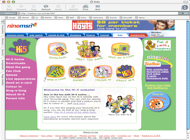Hi5 is an Australian production which has been sold internationally. It has been chosen as a focus because of its popularity with young children. Not only is there the television program, there is also a whole series of related merchandising items and promotional activities, a website, Facebook page, Twitter, Instagram and a YouTube Television channel. Merchandising items include videos of the program, books, games, jigsaw puzzles and clothing. Related promotional activities include concerts and guest appearances at shopping malls.
Identify What Children Know About Hi5
Draw on the students' prior knowledge, life experience, and community background to elicit their knowledge of the Hi5 group, programs, and associated merchandise and promotion. This may include their knowledge of:
- the television program
- the characters
- the singing group who perform at concerts
- the products and promotional activities
- the webpage and other social media
Ask the students to draw/write what they know about Hi5. Within shared writing, model a graphic organiser incorporating students' ideas - words and symbols.
Some students may not have heard of Hi5 or not be familiar with Hi5. In that case, ask them to draw/write about a program they know and like.
Identify why the children like Hi5 (or another children's television program). Is there anything they don't like about it? What?










































